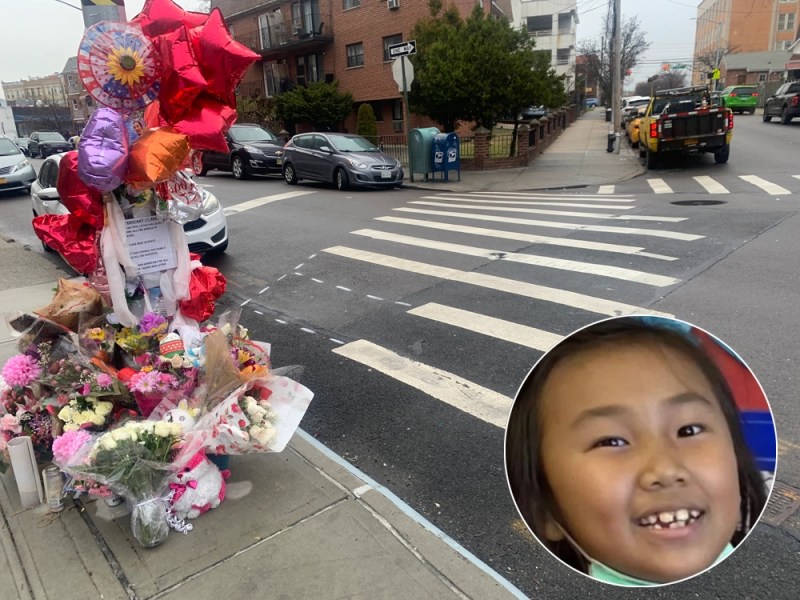CB1 Members Demand Universal Daylighting After Drivers Kill Two Kids

The city must clear all intersections of parked cars that block visibility and endanger countless New Yorkers’ lives, demanded community board members in Astoria, where drivers have already killed two children at crossings this year, including a 7-year-old girl.
The Department of Transportation exempts itself from state law requiring officials to keep intersections free of parked cars within 20 feet, also known as daylighting, but Queens Community Board 1’s Transportation Committee voted on Thursday to demanding that officials axe the carveout.
“Unfortunately we’ve recently lost two children — a 7-year-old and a 16-year-old — at intersections, and we should be doing all we can to prevent that in the future,” said CB1 member Adam Fisher-Cox at the committee’s June 1 virtual meeting.
In just the past year alone, there have been a whopping 2,092 crashes in CB1, injuring 972 people — nearly three every day — and killing four.
In February, a driver fatally struck Dolma Naadhun, 7, at Newtown Road and 45th Street, where cars routinely parked right up against or in the crosswalk.
Days after the crash, DOT finished painting an incomplete crosswalk and added “no standing anytime” signs near the crossing, and painted a no-parking area at the corner with plastic flappers that drivers can still ignore and park in.

The agency also agreed to install a traffic light at the intersection, at the request of Dolma’s grieving father, and set up all-way stop signs a block over on 46th Street.
Two months later, Jayden McLaurin, 16, was struck and killed by a hit-and-run driver while riding his Citi Bike at 21st Avenue and 21st Street.
Last year was the deadliest year for children on the roads since former Mayor Bill de Blasio launched Vision Zero in 2014 aiming to curb road deaths, and 2023 is on pace to being the worst 12-month period in the last nine years.
It doesn’t have to be like that, members of CB1 pointed out.
Their letter cites national design guidelines and more local examples like Hoboken, New Jersey, where planners have been rigorously building out safer intersections with daylighting, and where there hasn’t been a traffic-related death since 2017.
“Ultimately, we are just asking DOT to follow the law,” said Huge Ma, a board member also known for creating the pandemic-era Twitter bot TurboVax. “I think it will save lives.”
The Queens civic committee’s letter urges DOT to daylight corners with physical infrastructure to keep cars from hogging the spaces near intersections, endangering countless lives, not just paint. The city should either build out the curb corners with concrete, or install granite blocks, planters, or bollards.
The Big Apple should fold daylighting and curb extensions into any future road resurfacing or sidewalk reconstruction as standard practice, the committee wrote, similar to how Hoboken has managed to quickly deploy the life-saving infrastructure.
DOT officials have justified the policy of not daylighting every corner, saying they found some cases where it caused more dangerous driving because motorists could more aggressively cut a corner when there was no parked car blocking the way. That was based on a limited 2015 study that only looked at intersections that had hydrants forbidding parking at the corner, not any actual physical barriers to keep drivers out.
The Council last week enacted a bill requiring the city to daylight 100 intersections every year starting in 2025, overcoming opposition from the Adams administration. DOT did clear that same number of crossings last year by installing bike corrals at corners.
A spokesman for DOT said the agency will review the request.
“Daylighting is one of our proven safety enhancements, including the use of bike corrals, blocks and planters,” said Scott Gastel.
Correction: A previous version of this story falsely stated that DOT failed to meet Mayor Adams’s goal of daylighting 100 intersections with bike corrals in 2022. Streetsblog regrets the error.





